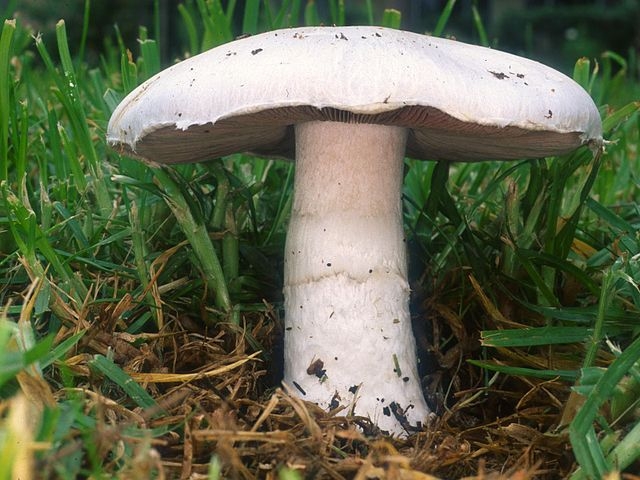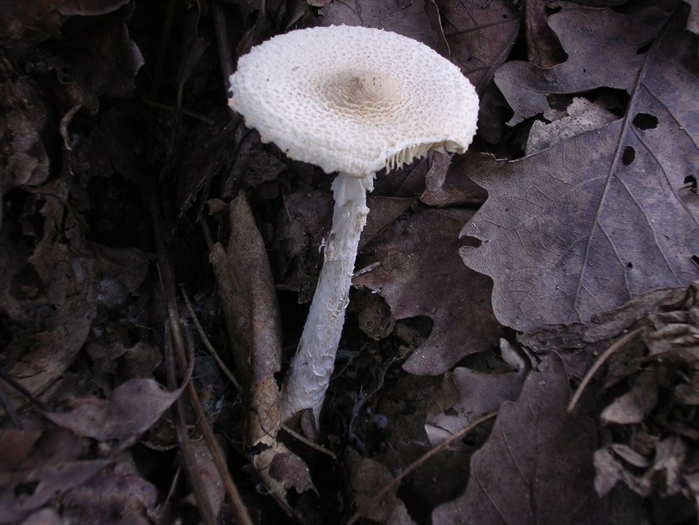
Agaricus campestris or meadow mushroom.
Image Credit: Wikimedia Commons/Nathan Wilson
October 12, 2016 - 12:00 PM
OPINION
I have been getting a request several times a day. “What are these mushrooms growing in my lawn?” The answer is not simple.
As consumption of wild fungi goes mainstream, with wild mushrooms seasonally available at markets and restaurants, folks are paying more attention to their surroundings. Often, the thinking is: If those mushrooms are good then why aren't mine?
The best answer to eating your lawn mushrooms is a quick no. Even mycologoists (fungi professors) have difficulty with visual identification of certain lawn mushrooms.
Mushrooms grow in two general patterns. Saprophytes (farmed mushrooms are in this group) will grow from decaying organic matter. Mychorhyzal fungi will form a connection to living things, such as trees. Simply put words, some grow off dead stuff and some grow off living stuff. It is impossible to farm the tree-loving mychorhyzal fungi that are sought after for the plate.
These lawn mushrooms will easily fall outside the area of expertise for most mushroom foragers because they are in fields of grass, and we spend our time hiking the forest. I have eaten a few, and can certainly help point a person in the right direction with an identification of their lawn fungus.

Lepiota mushroom
Image Credit: Wikimedia Commons/Dragonòt
There are two families of mushroom species that you want to pay attention to in your lawn: Agaricus and Lepiota. There are poisonous Agaricus and edible Agaricus. There are also poisonous and edible Lepiota. The edible and poisonous mushrooms of these two groups all have a similar appearance and can vary in difficulty for identification, but all will be a challenge to confirm.
The classic farmed mushroom is Agaricus bisporus. This species doesn't grow wild but will resemble another common Agaricus, the meadow mushroom.
The rediscovered mainstream curiosity for our natural surroundings is a wonderful thing, but more and more of my time is spent on explaining our local bursts of grass loving fungus.
Even if a person became an expert on the local field mushrooms, in this climate, they are almost always full of worms.
We welcome your comments and opinions on our stories but play nice. We won't censor or delete comments unless they contain off-topic statements or links, unnecessary vulgarity, false facts, spam or obviously fake profiles. If you have any concerns about what you see in comments, email the editor.
News from © iNFOnews, 2016